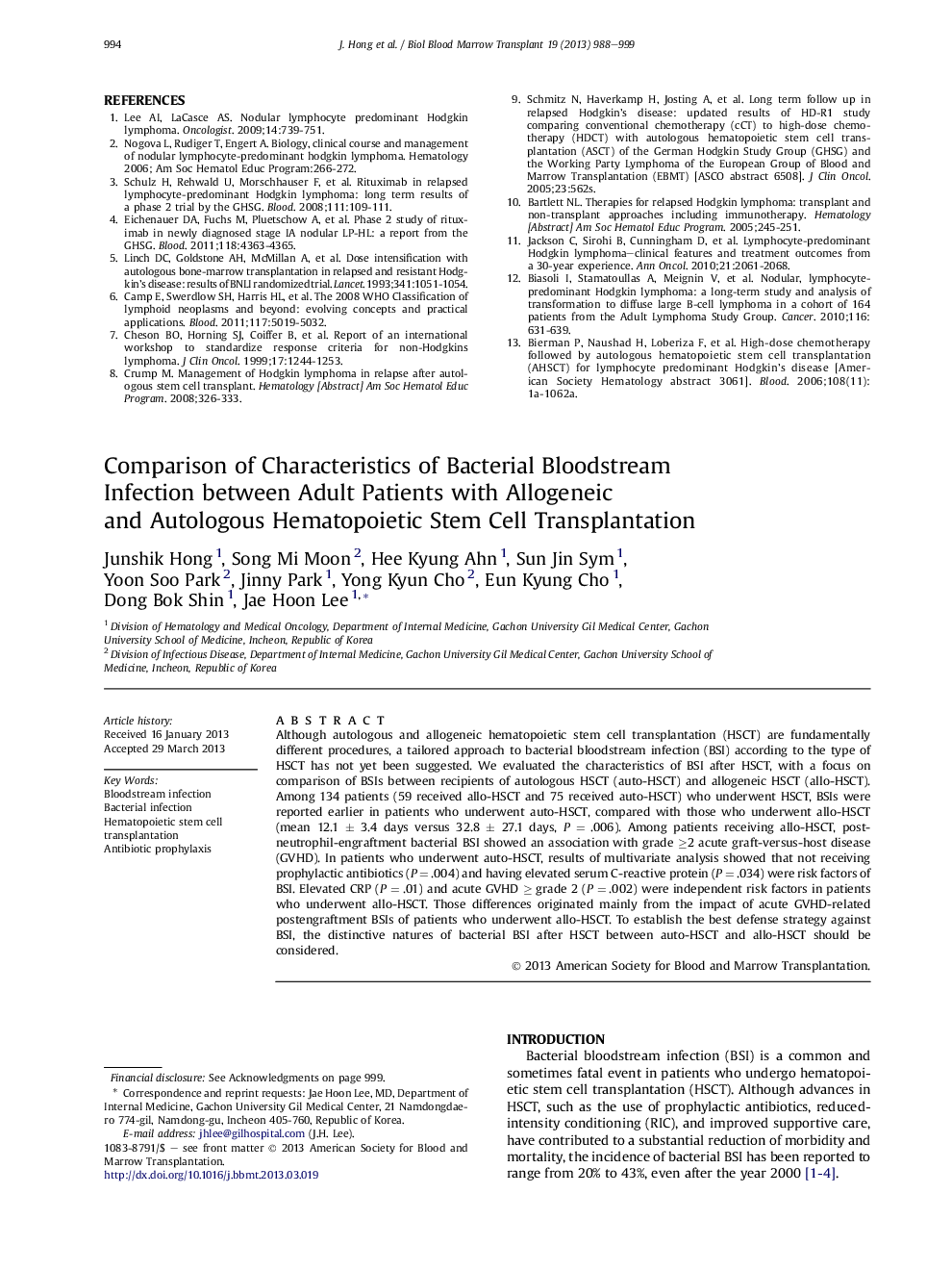| Article ID | Journal | Published Year | Pages | File Type |
|---|---|---|---|---|
| 2105412 | Biology of Blood and Marrow Transplantation | 2013 | 6 Pages |
Although autologous and allogeneic hematopoietic stem cell transplantation (HSCT) are fundamentally different procedures, a tailored approach to bacterial bloodstream infection (BSI) according to the type of HSCT has not yet been suggested. We evaluated the characteristics of BSI after HSCT, with a focus on comparison of BSIs between recipients of autologous HSCT (auto-HSCT) and allogeneic HSCT (allo-HSCT). Among 134 patients (59 received allo-HSCT and 75 received auto-HSCT) who underwent HSCT, BSIs were reported earlier in patients who underwent auto-HSCT, compared with those who underwent allo-HSCT (mean 12.1 ± 3.4 days versus 32.8 ± 27.1 days, P = .006). Among patients receiving allo-HSCT, postneutrophil-engraftment bacterial BSI showed an association with grade ≥2 acute graft-versus-host disease (GVHD). In patients who underwent auto-HSCT, results of multivariate analysis showed that not receiving prophylactic antibiotics (P = .004) and having elevated serum C-reactive protein (P = .034) were risk factors of BSI. Elevated CRP (P = .01) and acute GVHD ≥ grade 2 (P = .002) were independent risk factors in patients who underwent allo-HSCT. Those differences originated mainly from the impact of acute GVHD-related postengraftment BSIs of patients who underwent allo-HSCT. To establish the best defense strategy against BSI, the distinctive natures of bacterial BSI after HSCT between auto-HSCT and allo-HSCT should be considered.
